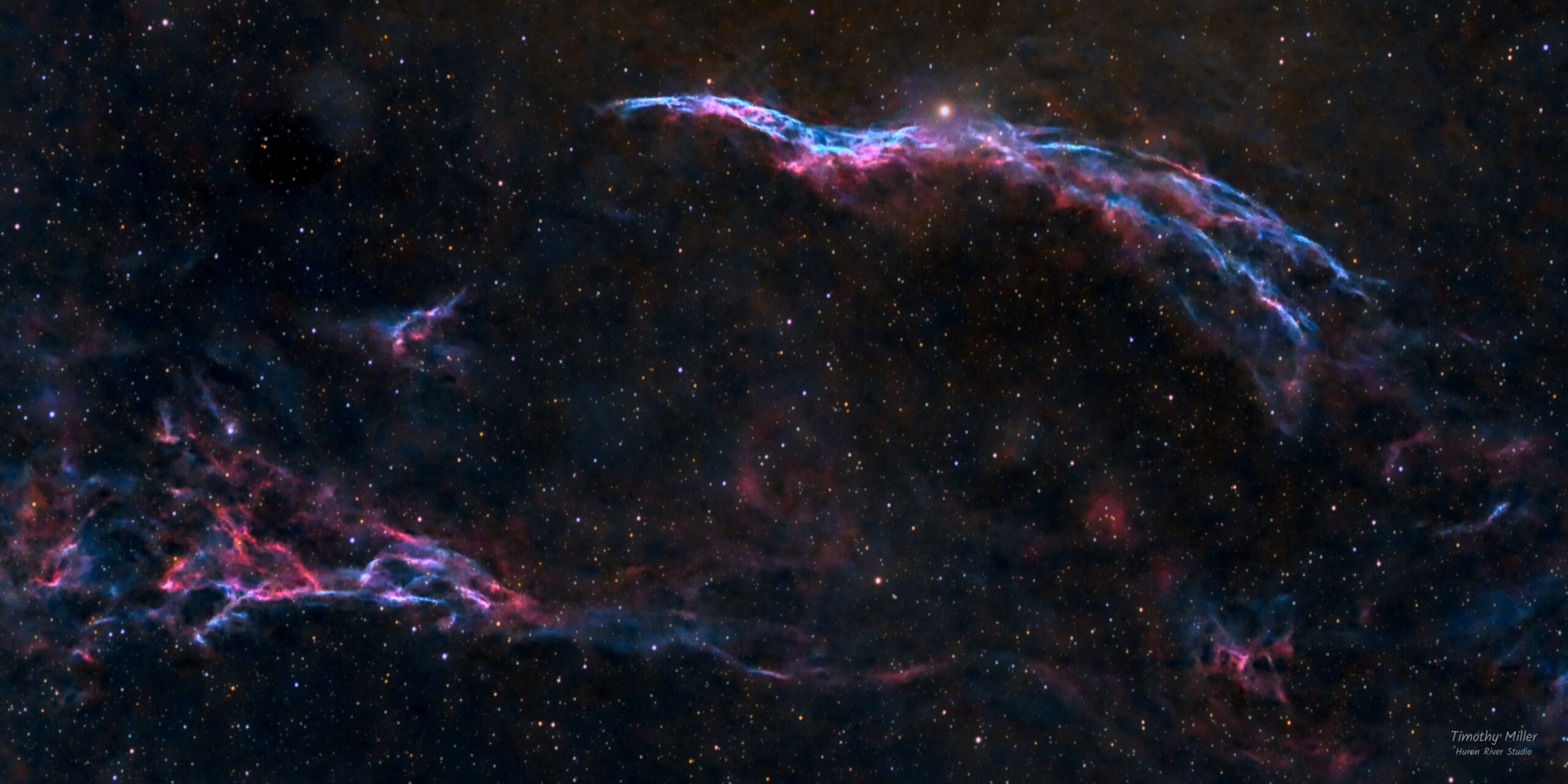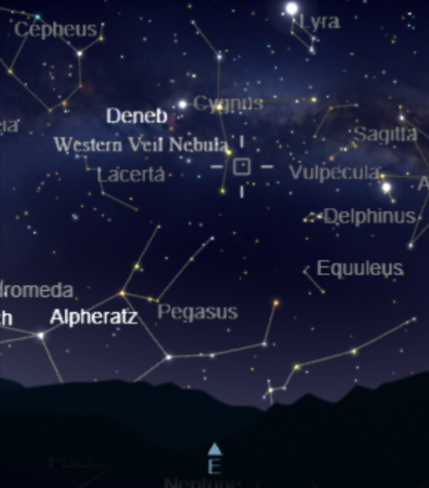Western Veil Nebula
Belleville, MI
06/28-29-30/25
The Western Veil Nebula (NGC 6960): Supernova Remnant in Cygnus
Visible high in the eastern sky during the evening hours of summer, the Western Veil Nebula, also known as NGC 6960, is a prominent segment of the Veil Nebula, a sprawling supernova remnant in the constellation Cygnus, the Swan. The image you see here is about half of the whole veil nebula. Often nicknamed the Witch’s Broom Nebula, this intricate structure of glowing filaments and shock fronts is part of the vast and complex remains of a massive star that exploded roughly 8,000 years ago.
Overview and Structure
The Veil Nebula is the result of a Type II supernova, marking the violent death of a star estimated to have been 20 times more massive than the Sun. The explosion released an immense shock wave that continues to expand outward, lighting up the interstellar medium and creating the rich tapestry of ionized gas we see today.
NGC 6960 represents the western edge of this shell-like structure. It visually intersects with the bright foreground star 52 Cygni, though this star (magnitude ~4.2) is unrelated and lies much closer to us—about 210 light-years away—while the Veil Nebula lies at a distance of approximately 2,400 light-years.
Physical Characteristics
- Size: The entire Veil Nebula complex spans nearly 3 degrees across the sky, or about 110 light-years in diameter. The Western Veil itself stretches nearly 35 light-years from end to end.
- Distance: ~2,400 light-years
- Apparent Magnitude: ~7, but it has very low surface brightness, making it difficult to observe visually without dark skies and filters.
- Structure: The nebula’s delicate filaments are created by the shock wave energizing the surrounding hydrogen, oxygen, and sulfur. These filaments are incredibly thin—sometimes less than a light-year across—but emit strongly in Hα (red), [O III] (green-blue), and [S II] (deep red), making it a stunning subject for narrowband astrophotography.
Ionization and Emission
Unlike emission nebulae powered by ultraviolet light from nearby stars, the Veil Nebula shines due to shock excitation. The blast wave from the original supernova plows into the surrounding interstellar medium at speeds over 600,000 mph (1 million km/h), heating and ionizing the gas. This produces the glowing, filamentary appearance with:
[S II]: Signifying slower-moving shocks and denser regions.
[O III] (doubly ionized oxygen): Emitting blue-green light, dominating many images of the Veil and indicating shock-heated gas at high temperatures (~10,000–20,000 K).
Hα: From ionized hydrogen, contributing to the reddish glow in broadband images.
Project Details
-
Belleville - Chelsea, MI
-
ZWO FF65 telescope @ FL=416mm, f=6.4, Pentax K3ii, 4 minute subs, 11h34m integration time



